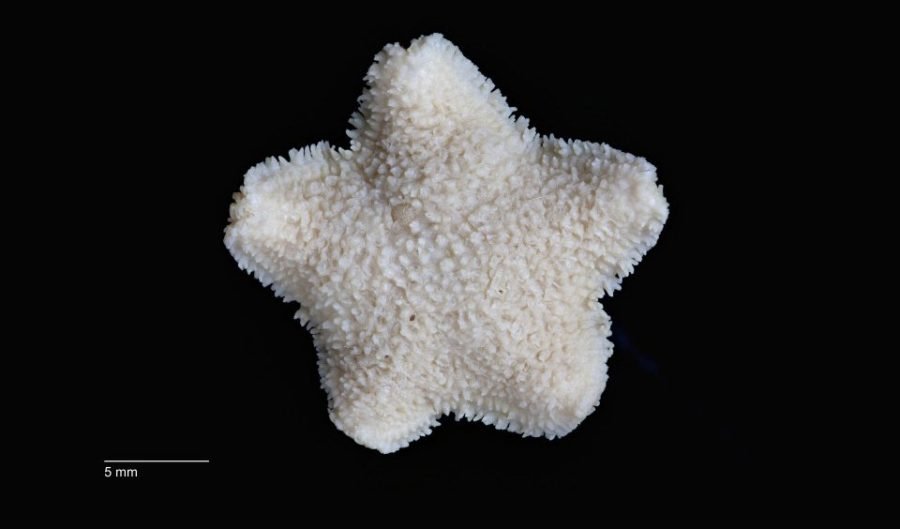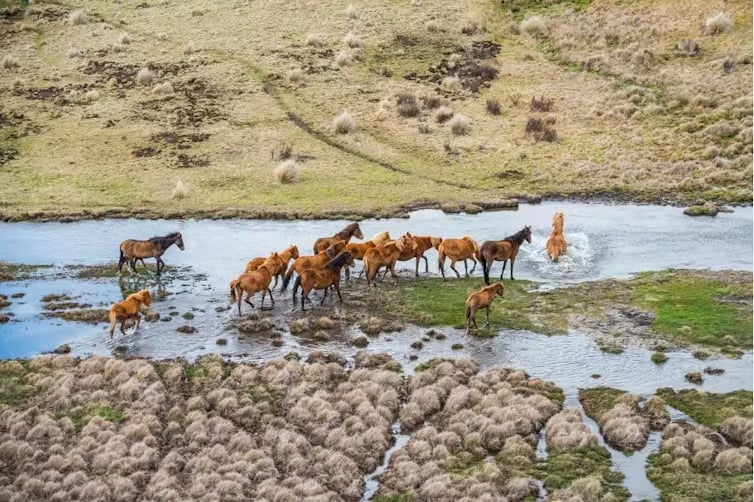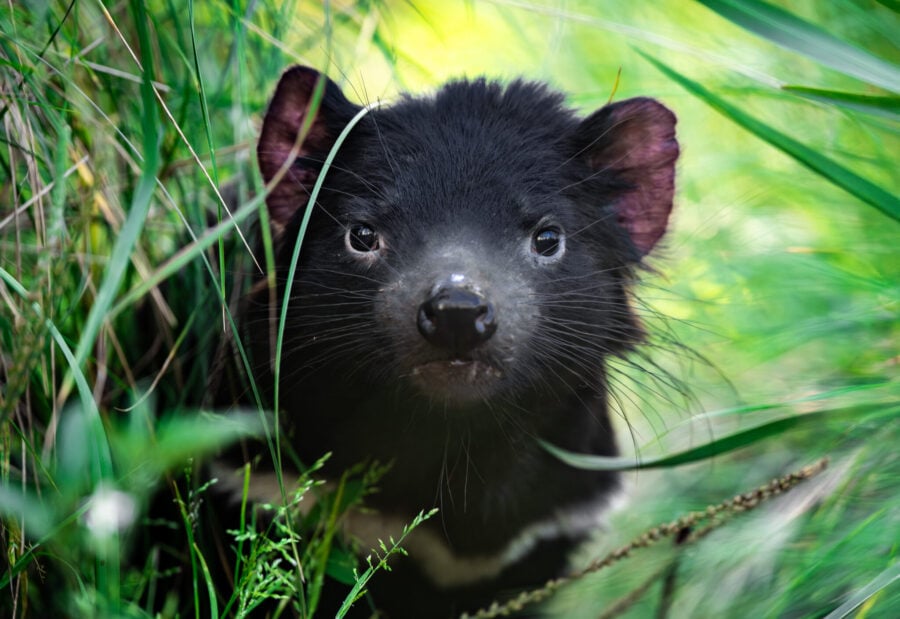Derwent River sea star

IUCN status
Not assessed
AUSTRALIAN CONSERVATION STATUS (EPBC Act)
Critically endangered
RANGE
As the name suggests, the Derwent River sea star occupies five locations throughout Tasmania’s Derwent River, none of which fall within the boundary of nature reserves.
COMMON NAME
Derwent River sea star
HABITAT
The species dwells in rocky waters which are less than 1.5m in depth.
CLASSIFICATION
Kingdom Animalia
Phylum Echinodermata
Class Asteroidea
Order Valvatida
Family Poraniidae
Genus Marginaster
Species littoralis
PENTAGANAL IN SHAPE and growing up to 17mm across, the Derwent River sea star is the only echinoderm currently on the Australian species endangered list.
It is blue to green in colour, with its underside off-white, which extends to the outer edge of the arms. There is brown colouring around the spinelets on its outer surface.
The species possess an extendable stomach, and it is thought to feed on algae and other small particles. Although little is known about the life cycle of the Derwent River sea star, characteristics of a similar sea star (Patiriella vivipara) suggest that the species has a life span of around four years.
Sub-populations have been recorded in five areas along the Derwent River, and each colony is crucial for the species’ survival. Unfortunately, three of the populations were last located in 1969, with the remaining two last seen in the early twenty-first century. It is thought that the species occupies just 0.01 square kilometres.
Threats to the Derwent River sea star
Competition from introduced species is the main threat to the Derwent River sea star. The New Zealand sea star (Patiriella regularis) was introduced in the early twentieth century; it has since invaded waters to the south-west of Tasmania. The New Zealand sea star is biologically very similar to the Derwent River sea star, and consequently it is believed that the native species may have been genetically swamped by the invader.
The destruction of the species’ habitat is a further threat. Populations in the Derwent River are located close to Hobart, and are subject to run-off pollution.
Recovery plans for the Derwent River sea star
There is no recovery plan in place to protect the species.
More Information:




